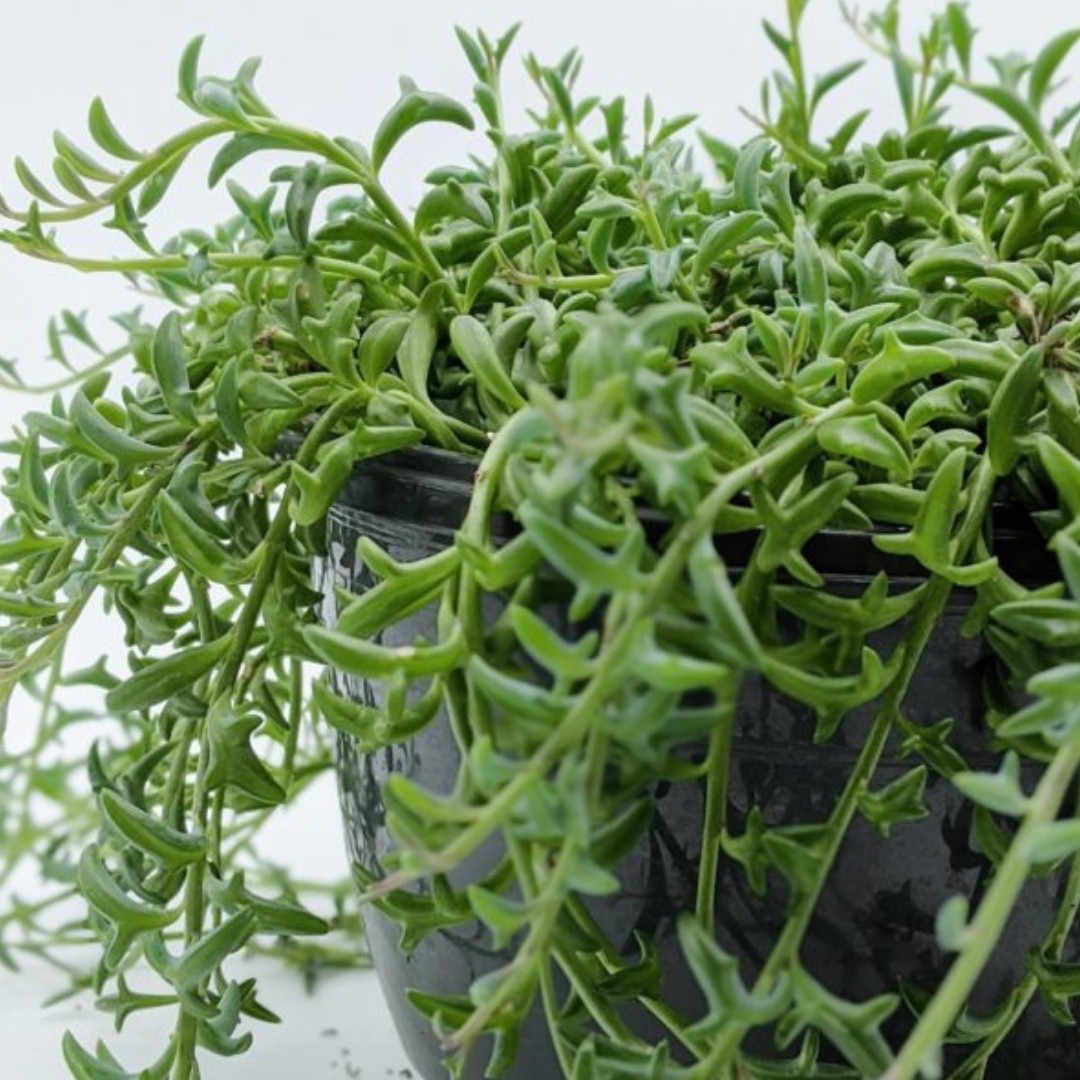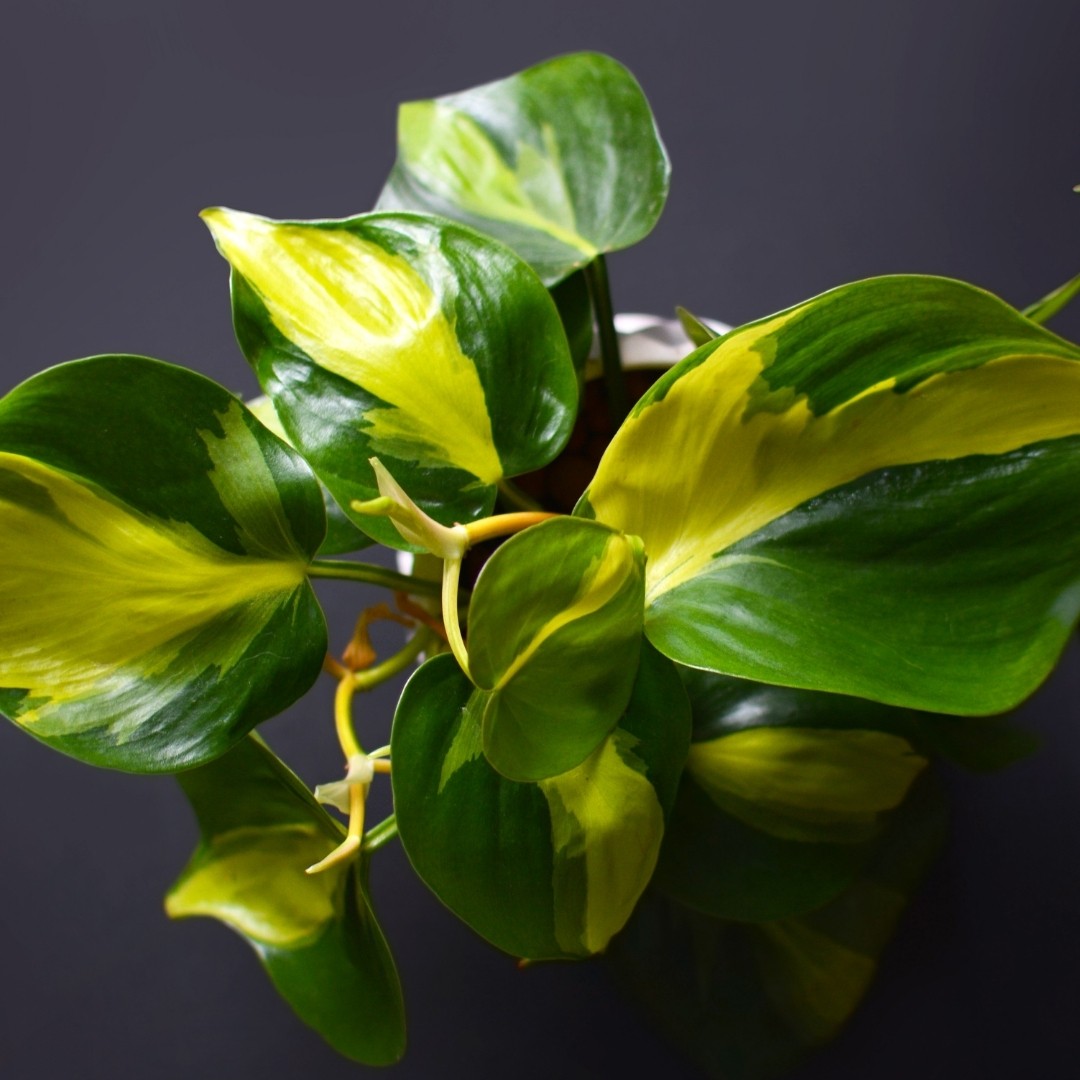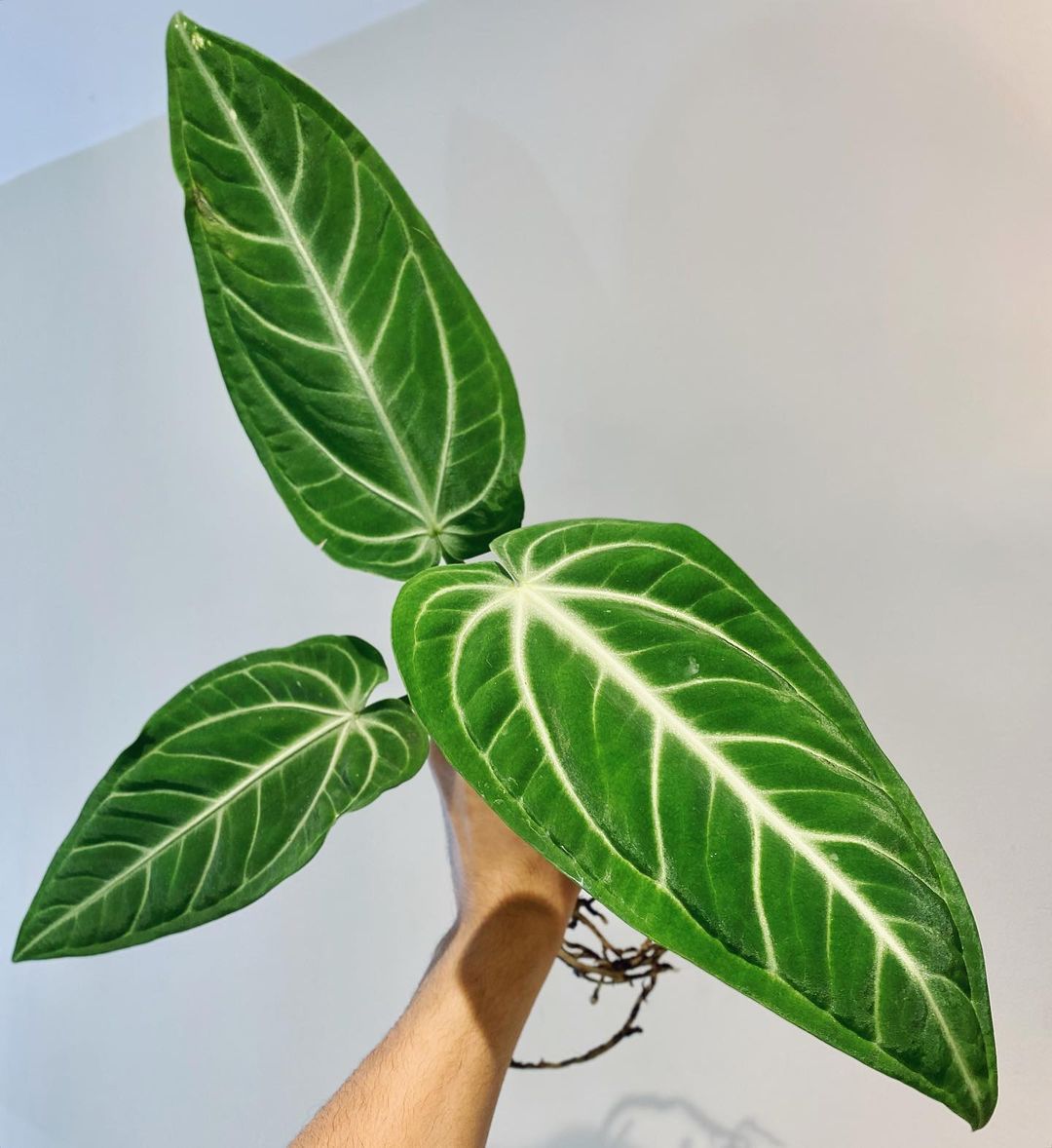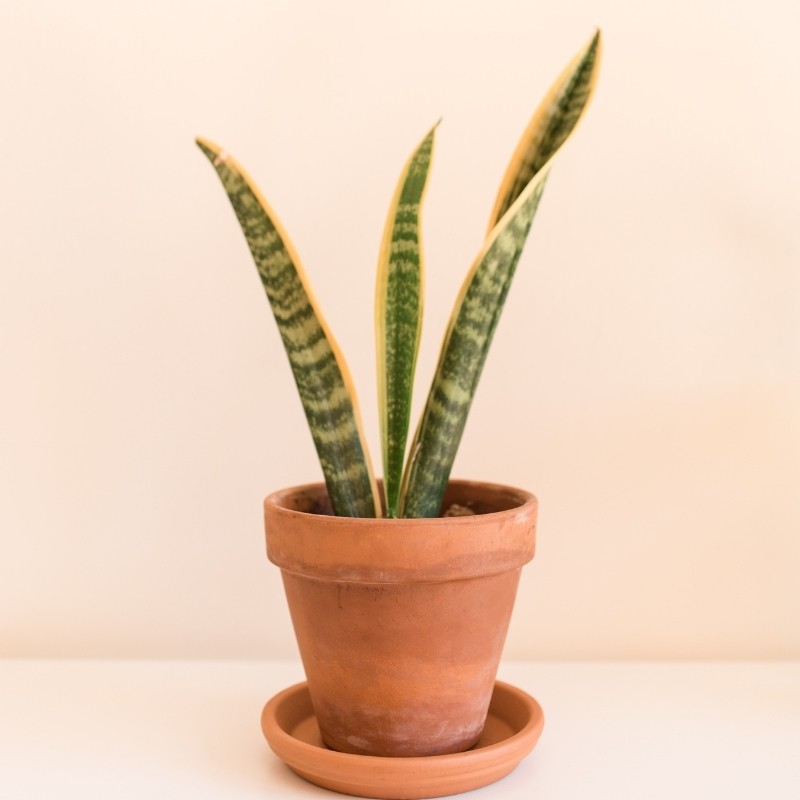
Snake Plant Care (Dracaena Trifasciata)
The key to snake plant care is to make sure they do not get over watered, other than this they are tough and hardy plants that survive almost all household locations.
Snake Plant Care (Dracaena Trifasciata) Care Summary
| Light needs: | Bright light for better growth but can survive in low light too. |
| Watering needs: | Let the soil dry out completely before watering again. |
| Fertilizer: | Do not need feeding, but you can use a cactus and succulent fertilizer once a month in the growing months to encourage a quicker growth. |
| Soil: | Cactus and succulent compost. |
| Humidity: | 40%. Snake plants do not need any special humidity conditions. |
| Temperature: | 18°C-30°C (65-85°F). |
| Where to buy: | Try our list of Rare Plant Shops. |
| Other names: | Snake plant, sansevieria, dracaena trifasciata, sansevieria trifasciata, mother-in-law’s tongue, Saint George’s sword. |
| Common issues: | Root rot. |
Intro
The snake plant, aka dracaena trifasciata, aka mother-in-law’s tongue, is an easy to care for and popular succulent plant. It is originally from West Africa, but can easily thrive in most households. In general they like to be good indirect sunlight, warm households and to be watered once dry.
See also: our snake plant category page, can snake plants live outside?, Propagation of Snake Plants, Succulent Propagation, Houseplants That Like Coffee, Crassula Perforata (String Of Buttons), Whale Fin Plant, Snake Plant Propagation In Water, Care For Zebra Cactus (Haworthiopsis Fasciata), Dracaena Compacta, Crassula Campfire, Tigers Jaw Succulent, Sansevieria Black Coral, Senecio Vitalis.
Tip: we recommend Etsy for buying plants. Look for the best rated seller you can, and try to buy as close to your home as possible so the plant does not travel too far.
A note about affiliate links: when you buy a plant, pots, soil, or other goods through links on this article we sometimes earn a commission. It doesn’t cost you anything, but it really helps us out if you do use them. Thanks a lot! An example of this is if you buy a plant on Etsy using this link. Read our privacy policy for more information. Thanks again.
Snake Plant Light Needs
Snake plants like bright but indirect sunlight, buy they will tolerate much less bright areas of your home too, they are very adaptable. Their growth rate is obviously higher in the brighter areas. They can even tolerate some direct sunlight as well, many grow outside.
How Much Water Do Snake Plants Need?
Your Sansevieria does not need a lot of water, remember it is a succulent. So make sure it completely dries out between watering it, which probably translates to once every 2 weeks in the hotter growing months of late spring and summer.
Fertilizer
Snake plants will be fine without any fertilizer. I do not fertilize mine. But you can use a cactus and succulent fertilizer in the growing months to encourage a quicker growth. Use it once a month to encourage faster growth.
Soil
Snake plants like to dry out sometimes, so make sure you use a cactus and succulent compost for them as this will drain water away from the roots well. Sansevieria’s roots do not want to sit in wet soil, so it is important to use a well-draining compost to avoid root rot.
For more on which cactus and succulent compost to buy or how to make you own, see our guide: Succulent Soil.
When To Repot A Snake Plant
If you see roots growing from the bottom of your snake plants you should repot it. They are best repotted in early spring, before the growing season, although you can repot them all year round. This is also a great time to divide them and take out some of the smaller pups to be potted up separately.

Humidity
40% is ideal. Snake plants do not need any special humidity conditions, they will do well in normal household humidity levels.
Temperature
Snake plants love a warm environment 18°C-30°C (65-85°f), but will tolerate temperatures above and below this, just don’t let them get down near freezing.
Snake Plant Propagation
The easiest way to propagate a snake plant is to put them in water and then move to soil when they have roots. They can take a long time to root, and I find they rot less in water. You need to keep the cuttings the same way up they are on the plant, so I cut off a whole blade/leaf from the plant, then using a pencil I draw arrows up the back of it so that I can tell which way up it should be. Then I cut the leaf into a few sections (about 4cms or an inch and a half each). Then I put them in a small cup, I use a small one as it keeps them close so they do not fall over in the water. Make sure the cuttings are right way up. Then leave the cup aside with no water in it for 3 or 4 days so the wounds callous over. Then after 4 days add water up to about half way up the cuttings. Keep it warm and in indirect sunlight for it to root. Keep it topped up and wait about 2 months. When it starts to root you can move it to soil.
See also: Succulent Propagation (with pictures).
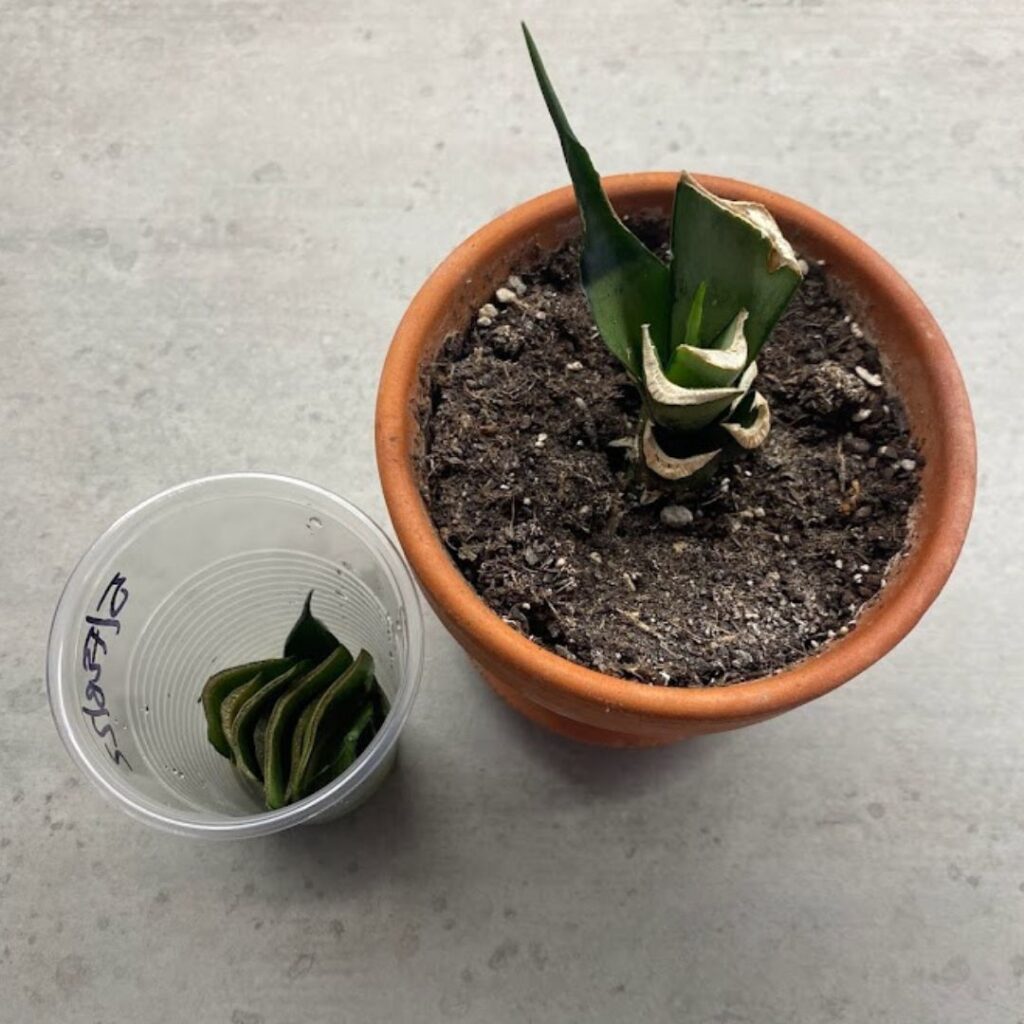
Snake Plant USDA Zone
Zones 9-11.
Is Snake Plant A Succulent?
Sanke plant is indeed a succulent.
Snake Plant Leaves Falling Over
The leave become floppy when they are overwatered, so be careful and let the soil dry otu before watering again each time.
Can Snake Plants Grow In Water?
Snake plants can grow in water alone, you can take a cutting then root it in water. You can keep it in water ongoing as long as you keep the water topped up, but it wil grow much quicker in soil.
Where To Buy A Snake Plant
They can be bought at almost any physical or online plant store. I like to trade mine as they are so easy to propagate.
Other Names for Snake Plant
Snake plant, sansevieria, dracaena trifasciata, sansevieria trifasciata, mother-in-law’s tongue, Saint George’s sword.
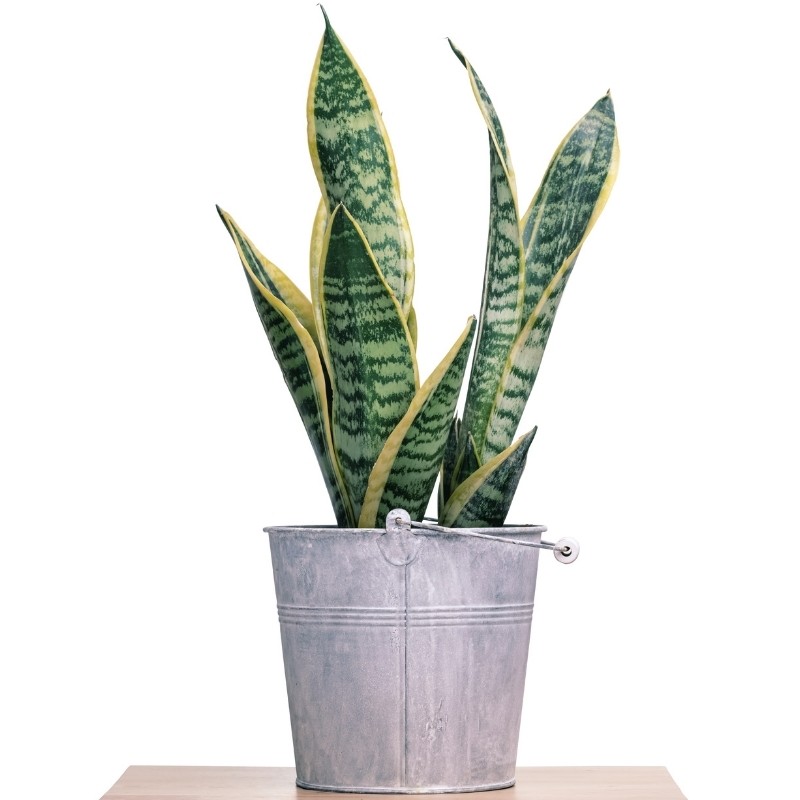
For more on succulents and cacti, see our succulents category with all our care guides.
Snake Plant Care FAQs and Common Issues
A common issue with snake plant is root rot. Make sure they dry out before watering and they have a well draining cactus compost.
They can be slow growing and this often raises concerns but it is normal and nothing to worry about, especially in the winter months.
Snake Plant Turning Yellow And Soft
Turning yellow and softening is a symptom of too much water. Do not overwater your sansevieria, make sure it dries out between watering.
Snake Plant Leaves Turning Brown
Check the soil to see if it is still wet, if so then the browning is most likely due to overwatering or root rot. Let the plant dry out fully. If the browning is at the leaf tips only then it could be due to too much or too strong fertilizer.
My Snake Plant Has Mushy Leaves
Mushy leaves is a sign of root rot. Remember that sansevieria is a succulent and needs to dry out before watering again.
Snake Plant Leaves Curling Inward
If a snake plant’s leaves are curling it is a sign of lack of water, check if the soil is dry and if so, give it a good watering.
Should I Mist A Snake Plant?
You don’t need to mist a snake plant just water them when they are dry.
Snake Plants Varieties?
There are lots of varieties of snake plant, over seventy in total. A very popular one is the Laurentii (variegated Snake Plant). Sansevieria gracilis (the one that looks like fat grass!). Sansevieria masoniana, a really wide flat-leafed variety also known as whale-fin or shark-fin plants.
The Moonshine Snake Plant is my favourite (Sansevieria trifasciata ‘Moonshine’), it has almost silver-like slender leaves.
Here is a list of a few of the more popular varieties of snake plant:
- Bantel’s Sensation
- Black Coral
- Black Diamond
- Black Dragon
- Black Gold
- Black Jack
- Black Princess
- Black Robusta
- Black Star Hahnii
- Cylindrica
- Dwarf Laurentii
- Emeral Star
- Fernwood
- Francisii
- Frozen
- Futura Robusta
- Futura Superba
- Golden Flame
- Golden Hahnii
- Hahnii
- Jaboa
- Jade Hahnii
- Kirkii
- Laurentii
- Leylanica
- Moonshine
- Night Owl
- Silver Hahnii
- Silver Laurentii
- Silver Queen
- Superba Robusta
- Whale Fin (Masonia)
- Whitney

When And How To Separate Snake Plant Pups?
When the plant pot gets crowded with too many pups you can separate them out. Take the plant out of it’s pot and take the soil off it’s roots. A good time to do this is when repotting. Using a sharp knife, cut off the pups at the roots, keeping a proportionate amount (where possible) of the roots for the pups. Then pot the pups up a new pot.
How Fast Do Snake Plants Grow?
Snake plants grow fairly slowly indoors, but can grow quicker in bright indirect sunlight.
Can Snake Plants Live Outside?
Snake plants can happily grow outdoors and tolerate direct sunlight, just make sure that temperatures do not drop to near freezing.
Is Dracaena Trifasciata The Same As Sansevieria?
Yes Sansevieria Trifasciata and Dracaena Trifasciata are the same plant. It used to be called sansevieria trifasciata but was reclassified to Dracaena Trifasciata a few years ago.
Is Dracaena Trifasciata Toxic To Dogs?
It is toxic to dogs and cats if eaten. Seek vets advice if you think your pet has ingested it.
Dracaena Trifasciata Vs Sansevieria Laurentii
The laurentii is a type of snake plant, it’s scientific name is ‘Dracaena Trifasciata Laurentii’. The old scientific name for it used to be ‘Sansevieria Trifasciata Laurentii’.

Other Articles You Might Like
Hope you enjoyed this article on snake plant care. You might also like our article on Snake Plant Propagation, as well as String Of Pearls Care, String Of Hearts. All our succulents articles can be found in the Succulent category.
Please follow us on Instagram for regular plant pictures and updates.
